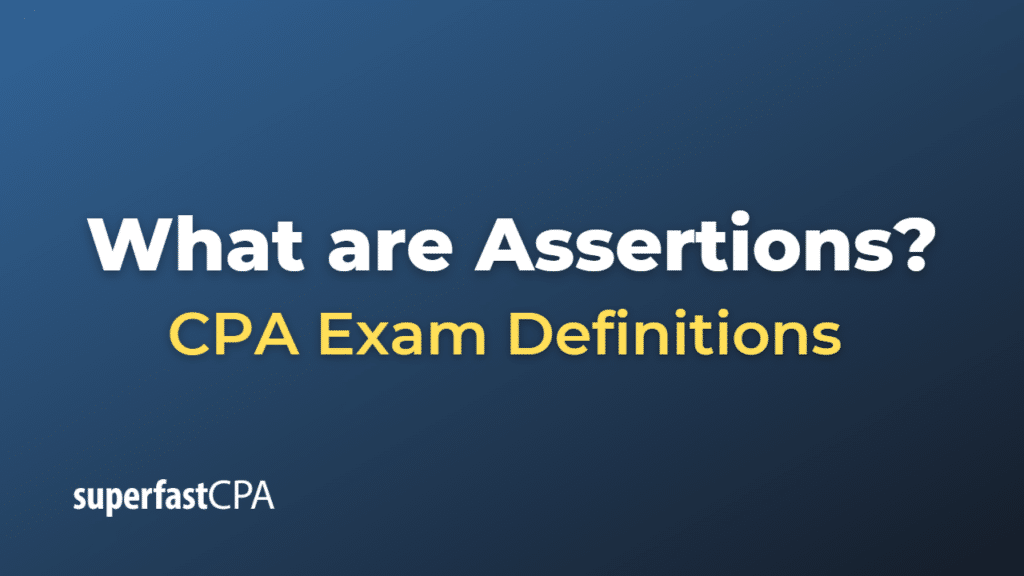Assertions
In accounting and auditing, assertions are representations made by a company’s management regarding the accuracy and completeness of the financial statements. Assertions are essential in the process of financial reporting, as they help ensure that the financial information presented is reliable, accurate, and in compliance with the applicable accounting standards. Auditors use assertions to plan and perform audit procedures that gather evidence to assess the truthfulness of the financial statements.
Assertions can be categorized into the following five classes:
- Existence or occurrence: Transactions and events that have been recorded actually occurred, and assets and liabilities exist at a given date.
- Completeness: All transactions, events, assets, and liabilities that should have been recorded have been included in the financial statements.
- Rights and obligations: The entity has legal rights to the assets, and the liabilities represent the entity’s obligations.
- Valuation or allocation: Assets, liabilities, revenues, and expenses have been recorded at the appropriate amounts in accordance with the applicable accounting standards.
- Presentation and disclosure: The financial statements’ components are appropriately classified, described, and disclosed.
Auditors examine these assertions to assess the risk of material misstatement in the financial statements and design their audit procedures accordingly.
Example of Assertions
Let’s consider a hypothetical company called “TechGadgets” and see how assertions apply to various aspects of its financial statements.
Existence or occurrence: TechGadgets reports $100,000 worth of inventory in its financial statements. The assertion of existence means that the inventory reported actually exists and is not an overstatement.
- Example audit procedure: The auditor might physically count the inventory at the company’s warehouse to verify its existence.
Completeness: TechGadgets should record all its sales transactions during the financial year. The assertion of completeness ensures that the company has not omitted any sales transactions from the financial statements.
- Example audit procedure: The auditor might trace a sample of shipping documents to the sales journal and verify that all sales transactions have been recorded.
Rights and obligations: TechGadgets reports a piece of machinery as an asset. The assertion of rights and obligations means that the company has legal ownership of the machinery, and it is not reported as an asset on behalf of another entity.
- Example audit procedure: The auditor might inspect the title documents or lease agreements for the machinery to confirm the company’s ownership or control.
Valuation or allocation: TechGadgets reports accounts receivable of $50,000. The assertion of valuation means that the accounts receivable are recorded at the appropriate amount, considering any allowances for doubtful accounts.
- Example audit procedure: The auditor might review the aging of accounts receivable, assess the reasonableness of the allowance for doubtful accounts, and confirm the balances with customers.
Presentation and disclosure: TechGadgets’ financial statements include a note describing its accounting policies for revenue recognition. The assertion of presentation and disclosure ensures that the accounting policies are accurately described and disclosed in the notes to the financial statements.
- Example audit procedure: The auditor might review the accounting policies disclosed in the notes and ensure that they are in accordance with the applicable accounting standards and accurately describe the company’s revenue recognition practices.













